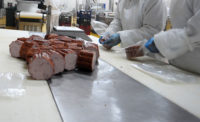Safety is one of the biggest drivers of change in the electrical industry today. Creating a safe working environment is essential to enhancing productivity, reducing downtime and avoiding expenses that were accrued due to an accident — all of which leads to substantially lower costs. Industrial workers interact with electrical hazards in a variety of locations around a facility. According to OSHA, most electrical accidents can be attributed to the following:
- unsafe environment;
- unsafe work practices;
- unsafe equipment or installation.
One of the first steps a plant manager can do to minimize risk is make sure there is an up-to-date safety plan in place. Electrical accidents within a facility can be prevented through a commitment to safe work practices that are routinely documented and reviewed. Start by developing a list of electrical safety issues that need to be addressed:
1. Lockout/tagout processes
LOTO is the No. 1 violation cited by OSHA and refers to a specific process to safeguard employees from the unexpected energization or startup of machinery and equipment, or the release of hazardous energy during service or maintenance activities. Employees should be trained to recognize a locked and tagged electrical source and to understand how the LOTO process affects their work areas. Plant managers should look for electrical devices that meet OSHA LOTO provisions and create equipment LOTO procedures that are written and posted at each piece of equipment.
2. Deterioration of equipment
Because of the dynamic and rugged nature of industrial environments, the everyday use of electrical devices can result in insulation breaks, short-circuits and exposed wires. Spotting and addressing deteriorating devices can protect workers and prevent an electrical hazard from developing. Below is a list of visual indicators to look for:
- bent prongs on receptacle blades;
- color changes, arcing or pitting on receptacle blades;
- visual signs of corrosion;
- worn power cords and bad connectors
- improperly grounded cable management trays.
Plant managers should incorporate the process of checking their facility for deteriorating devices in a preventive maintenance program. This ensures deterioration is identified and addressed in a timely manner.
3. Ground fault protection
It is also important to ensure electrical devices use products and technology that support ground fault protection. A ground fault circuit interrupter (GFCI) device is designed to help keep workers safe from electrical shocks by monitoring the electrical current and shutting off power when a ground fault is detected. For industrial facilities, it is important to look for GFCI devices designed to withstand wet and corrosive indoor and outdoor environments.
It’s also recommended that Ground Continuity Monitoring (GCM) plugs and connectors be used. Every GCM plug and connector is equipped with two sets of red and green LEDs to help indicate any one of seven potentially hazardous wiring conditions. Plugs and connectors that use GCM technology are able to look upstream or toward the panel. A break in ground continuity or reversed polarity from the receptacle back to the panel will be indicated by a red LED. A green LED will be illuminated when the problem lies downstream of the GCM plug, in the cord itself.
Using both a GCM plug and connector is helpful in troubleshooting. A green light on the plug and a red light on the connector tells you your problem exists within the cordset; however, red lights on both ends indicate a definite problem behind the wall, as well as a potential problem with the cordset.
Creating a safe working environment is essential to enhancing productivity, reducing down time and — most important — protecting workers. A culture of safety can be developed and cultivated through ongoing training, maintaining safety plans and continuous improvement of the facility and its electrical support equipment. NP







